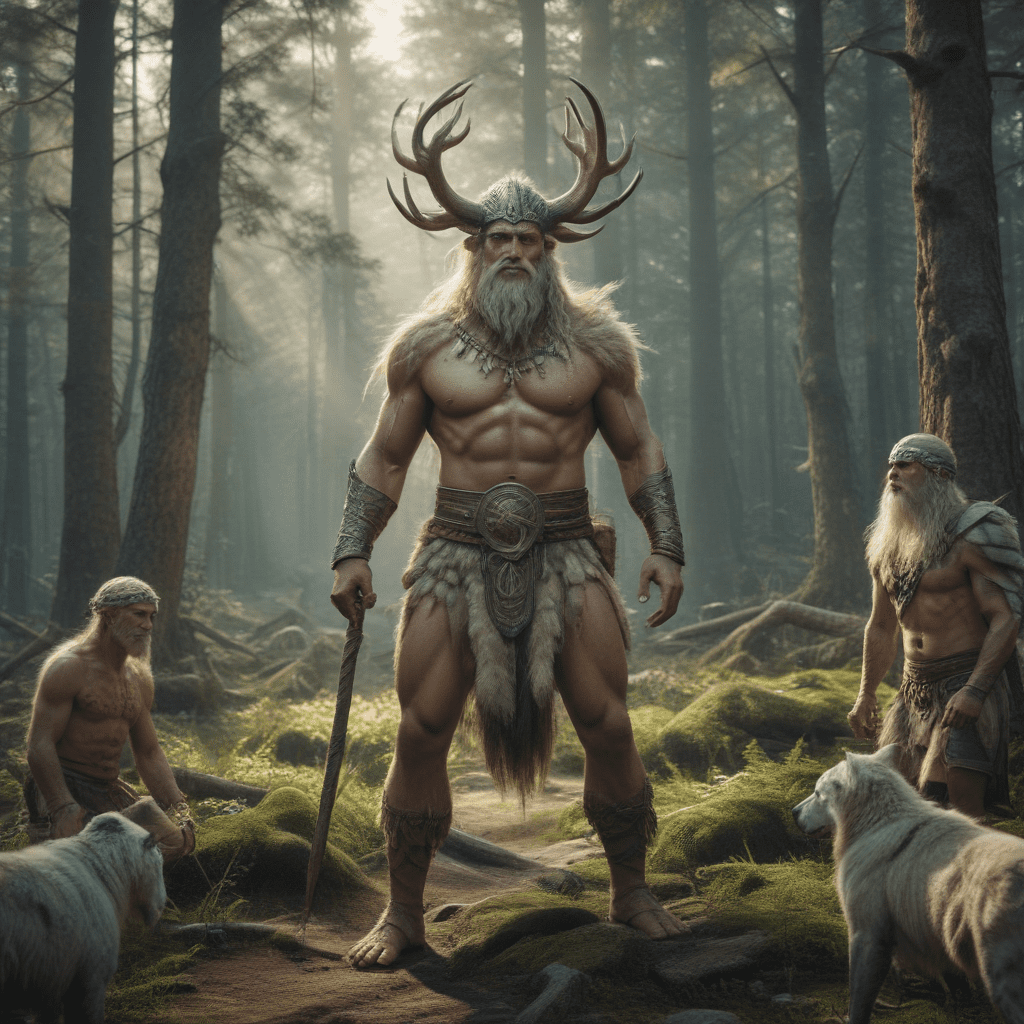Slavic Mythology: An Overview
Slavic mythology is a rich and complex tapestry of beliefs, traditions, and stories that originate from the Slavic-speaking peoples of Eastern and Central Europe. It is a diverse mythology that encompasses a vast array of gods, spirits, creatures, and myths. These tales often involve themes of transformation and renewal, reflecting the cyclical nature of life and the importance of rebirth. Slavic mythology is a captivating and enduring legacy that continues to influence contemporary culture and imagination.
The Role of Transformation in Slavic Tales
Transformation plays a central role in Slavic mythology. Gods, spirits, and creatures often possess the ability to transform themselves into different forms. This transformative power can be used for both good and evil purposes. For example, the goddess Živa, associated with spring and life, could transform herself into a cuckoo bird to herald the arrival of spring. On the other hand, the demon Veles, often depicted as a shape-shifting serpent, could transform himself into a handsome youth to deceive and abduct young women.
The Importance of Renewal in Slavic Mythology
Renewal is another significant theme in Slavic mythology. The cycle of seasons, the changing of the year, and the growth and decay of nature are all reflected in Slavic myths. Many Slavic deities are associated with specific seasons or agricultural cycles, and their powers often manifest in the renewal of the natural world. For example, the god Jarilo, associated with springtime, brings fertility and growth to the land, while the goddess Marena, associated with winter, brings death and decay.
Animals and their Transformative Roles
Animals play a prominent role in Slavic mythology, and many are believed to possess transformative abilities. The wolf, for instance, is often seen as a symbol of strength and ferocity. In some tales, wolves have the power to transform themselves into humans. Bears are another important animal in Slavic mythology, and they are often associated with the forest and its mysteries. In Slavic folklore, bears can take on human form and interact with humans, sometimes even taking on the role of a protector or guide.
Plants and their Healing and Renewal Properties
Plants also hold a significant place in Slavic mythology and are often believed to have healing and renewal properties. Many Slavic herbs and flowers are associated with specific deities or spirits and are used in traditional medicine to treat various ailments. Plants such as ferns, willow trees, and poppies are believed to possess magical abilities and are often incorporated into rituals and ceremonies aimed at promoting healing, purification, and renewal.
The Symbolism of Water in Slavic Transformation Tales
Water is a powerful symbol of transformation and renewal in Slavic mythology. Rivers, lakes, and seas are often depicted as places where characters undergo significant changes or where the boundaries between the natural and supernatural worlds become blurred. In some Slavic folktales, water can cleanse sins, heal wounds, or grant immortality. For instance, in the tale of Tsar Saltan, a princess is transformed into a swan after bathing in a magical lake.
The Power of the Sun and the Moon
The sun and moon are also important celestial bodies in Slavic mythology and are often associated with transformation and renewal. The sun is a symbol of life, fertility, and growth, while the moon represents night, mystery, and the feminine divine. In Slavic folklore, the rising sun is believed to dispel evil spirits, and the full moon is often associated with magical transformations. For example, in the tale of Vasilisa the Beautiful, the heroine's stepmother transforms her into a frog by throwing her skin into a fire under the full moon.
Slavic Folkloric Tales of Transformation
Slavic mythology is replete with folkloric tales that explore themes of transformation and renewal. These stories often feature characters who undergo physical, psychological, or spiritual changes as a result of their encounters with magical beings or extraordinary circumstances. For example, the tale of The Frog Princess tells the story of a prince who falls in love with a beautiful frog who is actually an enchanted princess. Through the prince's love and perseverance, the princess is eventually transformed back into her human form.
The Connection between Transformation and Seasonal Rituals
The cyclical nature of life and the changing of seasons is deeply embedded in Slavic mythology. Many Slavic festivals and rituals are tied to the agricultural calendar and celebrate the transitions between seasons. These rituals often incorporate themes of transformation and renewal, as people prepare for the coming of spring and bid farewell to the departing winter. For example, the Slavic festival of Maslenitsa is a week-long celebration that marks the end of winter and the beginning of spring. During Maslenitsa, people eat pancakes and dance around bonfires to symbolize the burning away of the old and the welcoming of the new.
The Enduring Legacy of Slavic Mythology: Transformation and Renewal in Modern Culture
The themes of transformation and renewal that permeate Slavic mythology continue to resonate in modern culture and literature. Slavic mythology has influenced the works of numerous writers, artists, and musicians, including J.R.R. Tolkien, Andrzej Sapkowski, and Neil Gaiman. These creators have drawn upon Slavic myths and legends to craft their own tales of transformation, renewal, and the enduring power of the natural world.
Frequently Asked Questions
- What are the key themes in Slavic mythology?
Transformation and renewal are central themes in Slavic mythology, along with other themes such as the power of nature, the importance of family, and the eternal struggle between good and evil.
- How is transformation depicted in Slavic myths and legends?
In Slavic mythology, transformation can take many forms, including physical changes, psychological shifts, and spiritual awakenings. These transformations can be brought about by encounters with magical beings, extraordinary events, seasonal cycles, or personal growth.
- Why is renewal so important in Slavic culture?
Renewal is crucial in Slavic culture because it represents the cyclical nature of life, death, and rebirth. Slavic rituals, festivals, and folklore often incorporate themes of renewal and celebrate the changing seasons, the rebirth of nature in the spring, and the hope for new beginnings.



